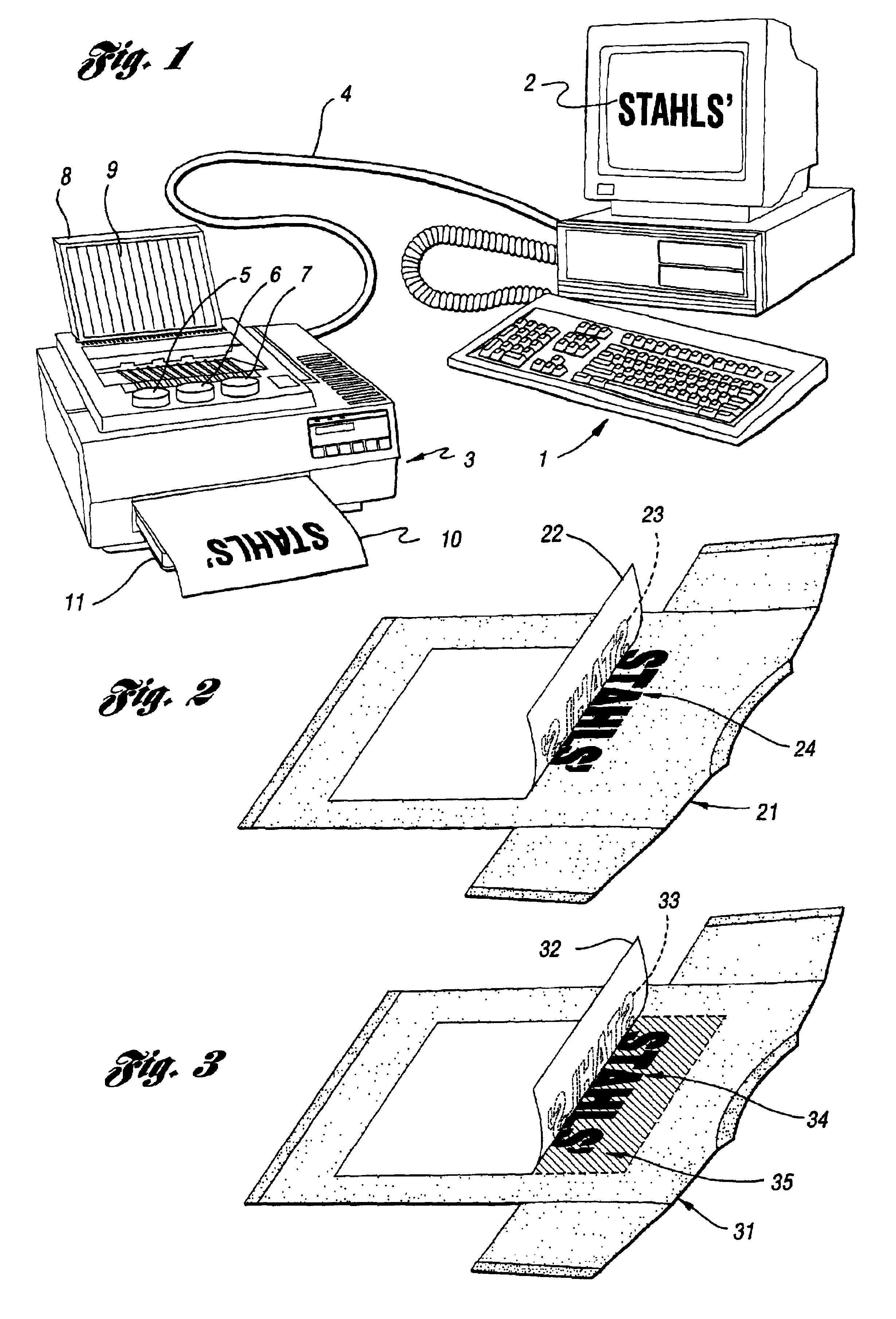Decorative transfer process
a transfer process and transfer method technology, applied in the field of decorative transfer process, can solve the problems of laborious silk screening process, limited monochrome transfer, and process requires a relatively expensive computer-guided cutting apparatus
- Summary
- Abstract
- Description
- Claims
- Application Information
AI Technical Summary
Benefits of technology
Problems solved by technology
Method used
Image
Examples
Embodiment Construction
A transfer is prepared using a Epson Stylus 1200 ink-jet printer and plain copy paper. The ink-jet printer cartridge cover is sawed off and the cartridge thoroughly washed. The cartridge is refilled with a standard silk screen transfer ink designated Multi-Purpose 700 Series Nylon SS ink designated as LF and manufactured by International Coatings Company, Cerritos, Calif., a polyvinyl plastisol screen printing ink. The ink is first thinned to a viscosity similar to the ink in the ink-jet print cartridge. A computer generated image is transferred electronically by standard computer / printer communication protocol to the ink-jet printer to generate the transfer. The transfer is then placed on top of a poly / cotton fabric and heated in a standard transfer press at 365.degree. F. for 20 seconds. The fabric retains the image from the transfer, but the hand and feel of the fabric is unaffected in the non-image areas, due to lack of any non-image polymer transfer from the paper.
Having now fu...
PUM
| Property | Measurement | Unit |
|---|---|---|
| nozzle diameter | aaaaa | aaaaa |
| drop velocities | aaaaa | aaaaa |
| frequencies | aaaaa | aaaaa |
Abstract
Description
Claims
Application Information
 Login to View More
Login to View More - R&D
- Intellectual Property
- Life Sciences
- Materials
- Tech Scout
- Unparalleled Data Quality
- Higher Quality Content
- 60% Fewer Hallucinations
Browse by: Latest US Patents, China's latest patents, Technical Efficacy Thesaurus, Application Domain, Technology Topic, Popular Technical Reports.
© 2025 PatSnap. All rights reserved.Legal|Privacy policy|Modern Slavery Act Transparency Statement|Sitemap|About US| Contact US: help@patsnap.com


